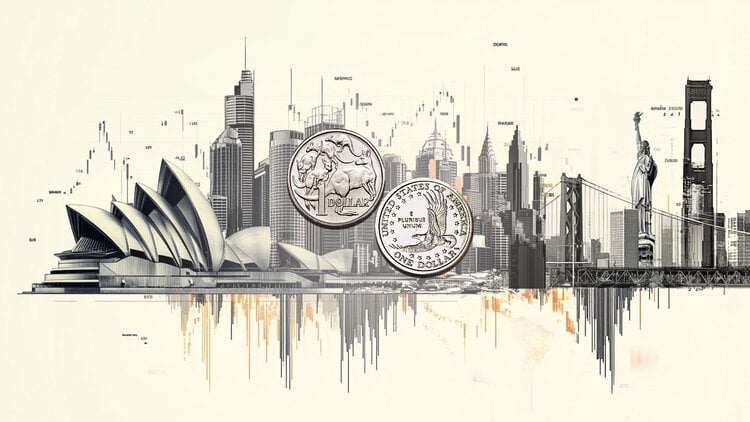- The US Dollar is losing strength ahead of the release of the US PCE Price Index report.
- A moderately hawkish BoJ governor, Kazuo Ueda, and better-than-expected Eurozone GDP figures have weighed on the USD.
- The inability to break the resistance at 104.55 has put the support at 103.90 in focus.
The US Dollar Index (DXY) declines on Thursday, extending the slight losses seen over the last four sessions. Still, the US dollar (USD) remains near three-month highs and is on track to close its best monthly performance in more than two years.
US macroeconomic data continues to support the rhetoric of a strong economy in a period of global slowdown, giving the USD a competitive advantage against the rest of the major currencies.
The ADP employment report beat expectations on Wednesday, easing concerns about a deteriorating labor market and improving investor expectations for Friday’s Nonfarm Payrolls (NFP) report.
What’s Moving the Market Today: US Dollar Lacks Momentum Ahead of Key Releases
- Eurozone Consumer Price Index (CPI) data for October has revealed higher-than-expected inflationary pressures, following a positive surprise in third-quarter GDP. These data reduce hopes of aggressive interest rate cuts by the ECB, supporting the Euro (EUR).
- The Bank of Japan (BoJ) kept interest rates unchanged on Thursday, but Governor Kazuo Ueda signaled further monetary normalization if conditions are met. This has given some oxygen to a battered Japanese Yen (JPY), adding pressure to the USD.
- The US ADP employment report showed an increase of 233,000 in private sector payrolls in October, well above the 115,000 expected. September’s reading was revised up to 159,000 from 143,000.
- Third-quarter US gross domestic product (GDP) data, also released on Wednesday, missed estimates with annualized growth of 2.8%. The numbers fell short of the 3% expected, but are still consistent with a strong economy.
- Wednesday’s data strengthened the case for gradual easing by the Federal Reserve (Fed), but did not add anything new that would significantly alter the outlook for the future path of interest rates. The immediate positive impact on the Dollar faded shortly after.
- The personal consumption expenditure (PCE) price index, the Fed’s preferred inflation data, is expected to show that price pressures continued to ease, with the underlying reading falling to 2.6% annually from 2.7% in September . Data will be published at 12:30 GMT.
- The main attraction will be Friday’s Nonfarm Payrolls (NFP) report, which is expected to show a significant decline in new payrolls. If these figures are confirmed, the US dollar could correct further.
DXY Technical Outlook: Approaching support zone at 103.90
The DXY index keeps its bullish bias intact, but the inability to break the resistance zone above 104.55 has increased the bearish pressure, sending prices to test the bottom of the recent range at 103.90.
The 4-hour Relative Strength Index (RSI) is showing a bearish divergence, and the price action has crossed below the 50-period Simple Moving Average (SMA). These are negative signs. Further depreciation below 103.90 would confirm a deeper correction and put 103.40 in focus. Resistances remain in the area of 104.55-104.75 and 105.20.
The US Dollar FAQs
The United States Dollar (USD) is the official currency of the United States of America, and the “de facto” currency of a significant number of other countries where it is in circulation alongside local banknotes. According to 2022 data, it is the most traded currency in the world, with more than 88% of all global currency exchange operations, equivalent to an average of $6.6 trillion in daily transactions. After World War II, the USD took over from the pound sterling as the world’s reserve currency.
The single most important factor influencing the value of the US Dollar is monetary policy, which is determined by the Federal Reserve (Fed). The Fed has two mandates: achieve price stability (control inflation) and promote full employment. Your main tool to achieve these two objectives is to adjust interest rates. When prices rise too quickly and inflation exceeds the 2% target set by the Fed, the Fed raises rates, which favors the price of the dollar. When Inflation falls below 2% or the unemployment rate is too high, the Fed can lower interest rates, which weighs on the Dollar.
In extreme situations, the Federal Reserve can also print more dollars and enact quantitative easing (QE). QE is the process by which the Fed substantially increases the flow of credit into a clogged financial system. This is an unconventional policy measure used when credit has dried up because banks do not lend to each other (for fear of counterparty default). It is a last resort when a simple lowering of interest rates is unlikely to achieve the necessary result. It was the Fed’s weapon of choice to combat the credit crunch that occurred during the Great Financial Crisis of 2008. It involves the Fed printing more dollars and using them to buy US government bonds, primarily from financial institutions. QE usually leads to a weakening of the US Dollar.
Quantitative tightening (QT) is the reverse process by which the Federal Reserve stops purchasing bonds from financial institutions and does not reinvest the principal of maturing portfolio securities in new purchases. It is usually positive for the US dollar.
Source: Fx Street
I am Joshua Winder, a senior-level journalist and editor at World Stock Market. I specialize in covering news related to the stock market and economic trends. With more than 8 years of experience in this field, I have become an expert in financial reporting.





